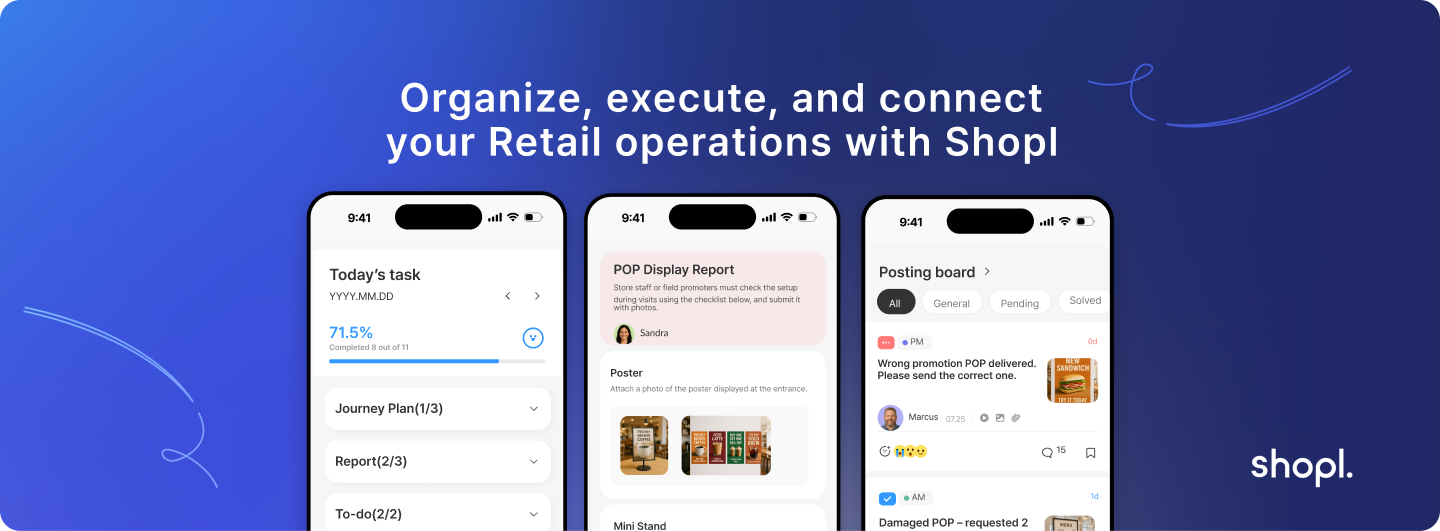

A store rollout is more than just a campaign launch. In the retail industry, it refers to a structured, multi-phase process to introduce a product, display, promotion, or operational setup across multiple physical locations. Success requires close coordination between marketing, trade, retail ops, and field execution teams—ensuring the product isn’t just available, but visible, accessible, and purchased at the point of sale.

This flow shows how various teams—from headquarters to store staff—collaborate to bring a rollout to life:
Even with a solid strategy, store-level execution often breaks down. According to Nielsen BASES, approximately 80% of products that fail pre-market readiness tests but are still launched end up underperforming in market (source).
This highlights a key problem: rollout success depends not just on planning—but on alignment, training, and visibility across the retail chain.
What goes wrong:
Example: A beverage brand promotes a new flavor as "now in stores," but trade teams haven't received the POP materials yet. The product isn’t available on shelves—leaving staff confused and customers disappointed.
How to avoid it:
Why it matters: Promoters and store staff are often the only human touchpoint between a campaign and the shopper. If they don’t know how to speak about the product or promo, they can’t drive conversion.
Stat to know: According to a 2023 study by POPAI, stores with trained staff saw up to 33% higher sell-through ratesfor promotional products compared to untrained stores.
Example: A beauty brand rolls out a new foundation. Displays arrive on time, but during the launch weekend, shoppers ask for help with shade matching or skin type recommendations—and staff respond, “We just received this—we haven’t been briefed.” Sales fall short of expectations, and regional managers are forced to conduct emergency follow-up training.
How to avoid it:
What can go wrong:
Temporary POP display initiatives generate an average sales lift of 24%, according to the Path to Purchase Institute’s POP Trends Survey (source).
Example: A tech brand sends premium displays for a new product rollout. But due to unclear instructions, stores either skip setup or install them in low-traffic zones.
How to avoid it:

The issue: Rolling out a campaign doesn’t guarantee that it’s executed correctly across stores. Without real-time data, head office teams can’t fix issues early.
How to avoid it:
Why this fails:
Example: A food brand sends a single version of a large cardboard display to all stores. Corner shops can’t fit them—so they’re discarded or poorly placed.
How to avoid it:
A great product and creative campaign won’t make an impact without reliable store execution. For trade marketers, success means planning not just for rollout day, but for the last meter.
To recap:
Ready to fix your rollout blind spots? Manage your next rollout with Shopl
From launch prep to in-store execution—use our free checklist and audit template to keep every step on track.

